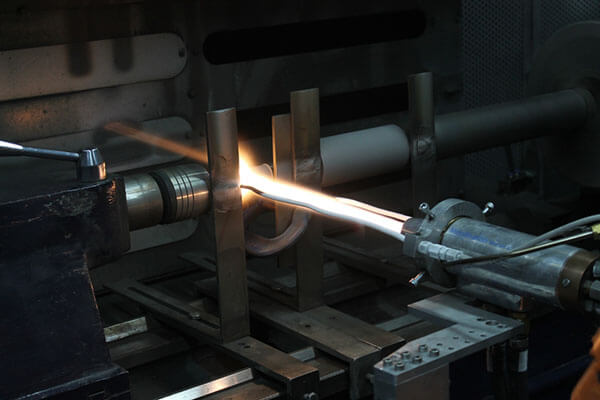Thermal Spraying
Thermal Spraying in the Workplace
Thermal spraying, or metalizing is a coating process where hot materials are sprayed onto a workpiece, coatings can include composites,  ceramics, metals, and alloys. Parts that have been sprayed can be enhanced to withstand high temperature, corrosion and wear. Industries that make use of thermal spray include Aerospace, Medical Implants, Gas Turbine, Oil and Gas and Automotive manufacturers. As with many industrial processes, operators must take steps to mitigate the hazards associated with thermal spray, particularly the dangers of inhaling dust and fumes present in most applications.
ceramics, metals, and alloys. Parts that have been sprayed can be enhanced to withstand high temperature, corrosion and wear. Industries that make use of thermal spray include Aerospace, Medical Implants, Gas Turbine, Oil and Gas and Automotive manufacturers. As with many industrial processes, operators must take steps to mitigate the hazards associated with thermal spray, particularly the dangers of inhaling dust and fumes present in most applications.
Types of Thermal Spraying
There are many types of thermal spray methods, each with their own advantages and disadvantages:
- Flame Spraying
- Plasma Spraying
- Wire Arc Spraying
- HVOF (High Velocity Oxy-Fuel coating spraying)
- Warm Spraying
- Cold Spraying
- Hardfacing
- Detonation Spraying
Health Risks Associated with Thermal Spraying
Whether the process is automated or manual, spraying molten material at high-speed presents a health and safety risk in the workplace as bright UV light can burn skin or eyes, and the intense heat can pose a fire or explosion hazard. Thermal spraying typically occurs in confined areas, and without adequate ventilation. As a result, the concentration level of fumes can become dangerous to a worker’s health. The heated materials and coating overspray can generate significant volumes of fumes and dust which can produce very fine particles – down to submicron levels, which are much more harmful to the lungs. The use of compliant fume and dust collection systems is critical to protecting an operator’s breathing zone and limiting particles from contaminating the coating. The following health and safety risks are present to varying degrees with thermal spray operations:
- Metal Fume Fever
- Lung Cancer
- Bronchitis
- Emphysema
- Pneumoconiosis
- Fire and Explosion due to combustible dust and gases
OSHA Regulations for Thermal Spray Fumes and Dust
Because thermal spray often involves metallic dust such as nickel, lead, aluminum, cadmium and chromium, OSHA has implemented standards to mitigate the health risks associated with these toxic metal fumes. Moreover, fine metallic dust can also pose a combustible dust risk, particularly highly reactive materials including aluminum, titanium, and magnesium which pose a flash fire and explosion risk. OSHA has put in place PELs (Permissible Exposure Limits) on a time-weighted 8-hour period to ensure operators remain below the permissible limits. OSHA has published different limits for each material depending on toxicity and companies can comply with the standards by engaging an industrial hygienist to test the particle concentrations to ensure they remain below mandated PELs and avoid hefty OSHA fines.
Thermal Spray Fume and Dust Collection Solutions
Diversitech’s Filterhawk Cartridge Dust Collectors are designed to capture dust and fume from thermal spraying. Filterhawk Cartridge Dust Collectors can be outfitted with combustible dust accessories including fire detection and suppression systems, explosion vents, isolation, and abort valves and sprinklers. Collectors can be supplied with high-efficiency HEPA after filters to eliminate submicron toxic airborne particulate.
Cold Spray Fume and Dust Collection Solutions
Cold Spray is a new technology that offers a safer method for coating materials as heat is maintaintained below the material’s melting point. Several metals used in cold spray applications are combustible including aluminum, titanium, and magnesium, and require companies to ensure they safely capture dust while complying with combustible dust standards NFPA 484 and 652. Manual or automated cold spray booths can be ventilated with Diversitech’s Typhoon Wet Dust Collectors or in applications involving smaller spray areas in a large booth with higher deposition efficiencies, wet downdraft tables can be used to collect cold spray dust.
Contact us today for more about how we can help.